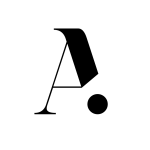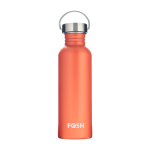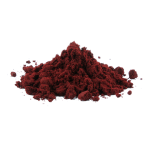Studie o účincích astaxanthinu - výběr
Zdroje: (1) Jyonouchi H, Zhang L, Tomita Y. (1993). Studies of immunomodulating actions of carotenoids. II. Astaxanthin enhances in vitro antibody production to T-dependent antigens without facilitating polyclonal B-cell activation. 19(3):269-80.Dostupné z: https://www.ncbi.nlm.nih.gov/pubmed/8346076
(2) Jyonouchi H, Sun S, Gross M. (1995). Effect of carotenoids on in vitro immunoglobulin production by human peripheral blood mononuclear cells: astaxanthin, a carotenoid without vitamin A activity, enhances in vitro immunoglobulin production in response to a T-dependent stimulant and antigen. 23(2):171-83. Dostupné z: https://www.ncbi.nlm.nih.gov/pubmed/7644386
(3) Lee, S., et al. (2003). “Astaxanthin inhibits nitric oxide production and inflammatory gene expression by suppressing IkB Kinase-dependent NFR-kB activation.” Molecules and Cells. 16(1):97-105. Dostunpé z: https://www.ncbi.nlm.nih.gov/pubmed/14503852
(4) Kidd, P. (2011). “Astaxanthin, cell membrane nutrient with diverse clinical benefits and anti-aging potential.” Alternative Medicine Review. 16(4):355-364. Dostupné z: https://www.ncbi.nlm.nih.gov/pubmed/22214255
(5) Iwamoto T, et al. (2000). Inhibition of low-density lipoprotein oxidation by astaxanthin. 7(4):216-22. Dostupné z: https://www.ncbi.nlm.nih.gov/pubmed/11521685
(6) Yoshida H., et al. (2010). “Administration of natural astaxanthin increases serum HDL cholesterol and adiponectin in subjects with mild hyperlipidemia,” Atherosclerosis. 209: 520–523. Dostupné z: https://www.ncbi.nlm.nih.gov/pubmed/19892350
(7) Choi H. d., et al. (2011). Positive Effects of Astaxanthin on Lipid Profiles and Oxidative Stress in Overweight Subjects. DOI: 10.1007/s11130-011-0258-9. Dostupné z: https://www.researchgate.net/publication/51688392_Positive_Effects_of_Astaxanthin_on_Lipid_Profiles_and_Oxidative_Stress_in_Overweight_Subjects
(8) Wang, HQ., et al. (2010). “Astaxanthin upregulates heme oxygenase-1 expression through ERK1/2 pathway and its protective effect against beta-amyloidinduced cytotoxicity in SH-SY5Y cells.” Brain Research. 1360:159-67. Dostupné z: https://www.ncbi.nlm.nih.gov/pubmed/20828541
(9) Chang, CH., et al. (2010). “Astaxanthin secured apoptotic death of PC12 cells induced by beta-amyloid peptide 25-35:its molecular action targets.” Journal of Medicinal Food. 13(3):548-556. Dostupné z: https://www.ncbi.nlm.nih.gov/pubmed/20521980
(10) Curek, GD., et al. (2010). “Effect of astaxanthin on hepatocellular injury following ischemia/reperfusion.” Toxicology. 267(1- 3):147-153. Dostupné z: https://www.ncbi.nlm.nih.gov/pubmed/19900500
(11) Nagaki Y., et al. (2002). Effects of astaxanthin on accommodation, critical flicker fusion, and pattern visual evoked potential in visual display terminal workers. Dostupné z: https://www.researchgate.net/publication/47294524_Effects_of_astaxanthin_on_accommodation_critical_flicker_fusion_and_pattern_visual_evoked_potential_in_visual_display_terminal_workers
(12) Nakamura A., et al. (2004). Changes in visual function following peroral astaxanthin. Dostupné z: https://www.researchgate.net/publication/292376472_Changes_in_visual_function_following_peroral_astaxanthin
(13) Nitta, T., et al. (2005). “The effects of astaxanthin on accommodation and asthenopia—dose finding study in healthy volunteers.” Clinical Medicine. 21(5):543-556. Dostupné z: https://www.researchgate.net/publication/298644250_Effect_of_astaxanthin_on_accommodation_and_asthenopia
(14) Shiratori, K., et al. (2005). “The effects of astaxanthin on accommodation and asthenopia—efficacy identification study in healthy volunteers.” Clinical Medicine. 21(6):637-650. Dostupné z: https://www.cyanotech.com/pdfs/bioastin/Abstracts-Eye_Health_GC_2.pdf
(15) Lee, S., et al. (2003). “Astaxanthin inhibits nitric oxide production and inflammatory gene expression by suppressing IkB Kinase-dependent NFR-kB activation.” Molecules and Cells. 16(1):97-105. Dostupné z: https://www.ncbi.nlm.nih.gov/pubmed/14503852
(16) Sawaki, K., et al. (2002). “Sports performance benefits from taking natural astaxanthin characterized by visual acuity and muscle fatigue improvements in humans.” Journal of Clinical Therapeutics & Medicines.18:(9)73-88. Dostupné z: http://www.cis.edu.rs/wp-content/uploads/kurs/XVIII-predavanje/reference/Sport-performance-benefits-from-taking-natural-astaxantin.pdf
(17) Earnest, C. P., et al. (2011). Effect of Astaxanthin on Cycling Time Trial Performance. DOI: 10.1055/s-0031-1280779. Dostupné z: https://www.researchgate.net/publication/51703925_Effect_of_Astaxanthin_on_Cycling_Time_Trial_Performance
(18) Malmsten, C. L., Lignell, A., et al. Dietary Supplementation with Astaxanthin-Rich Algal Meal Improves Strength Endurance – A Double Blind Placebo Controlled Study on Male Students. Dostupné z: https://www.researchgate.net/publication/267943758_Dietary_Supplementation_with_Astaxanthin-Rich_Algal_Meal_Improves_Strength_Endurance_-_A_Double_Blind_Placebo_Controlled_Study_on_Male_Students_-
(19) Aoi W1, Naito Y, Takanami Y, et al. (2008). Astaxanthin improves muscle lipid metabolism in exercise via inhibitory effect of oxidative CPT I modification. 366(4):892-7. Dostupné z: https://www.ncbi.nlm.nih.gov/pubmed/18082622
(20) Cosmetic benefits of astaxanthin on humans subjects* Kumi Tominaga, Nobuko Hongo, Mariko Karato and Eiji Yamashita* Fuji Chemical Industry Co. Ltd., Kamiichi, Toyama, Japan. Dostupné z: http://www.actabp.pl/pdf/1_2012/43.pdf
(21) Yamashita, E., et al. (2006). “The effects of a dietary supplement containing astaxanthin on skin condition,” Carotenoid Science. 10: 91–95. Dostupné z: https://www.researchgate.net/publication/267947293_The_Effects_of_a_Dietary_Supplement_Containing_Astaxanthin_on_Skin_Condition
(22) Jyonouchi H, Sun S, Iijima K, Gross MD. (2000). Antitumor activity of astaxanthin and its mode of action. 36(1):59-65. Dostupné z: https://www.ncbi.nlm.nih.gov/pubmed/10798217
(23) Capelli, B. (2018). “Natural astaxanthin. The supplement you can feel”, Algae Health Sciences, Inc., a BGG Company, page 152-154.


